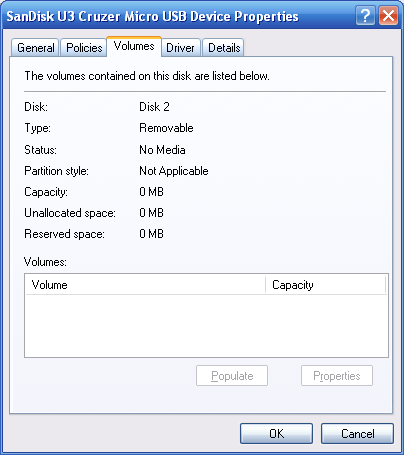Latest Reviews • (Redim) Your PDF files may need to be edited and you prefer working like MS word, AswordPDF lets you do it and you can add. • (Oneal) No need to expense huge on software to run lodging business, this all in one software will serve the purpose of booking. • (Reinhard) Helps the engineers to draw the electrical diagram of any type no matter how large it is so that the contractor may. • (Hushmare) If you work on pdf files where you need to extract images from the files manually you may give this a try which helps to. • (Hashim) New investors in the stock market need an watchdog constantly which StockwarePro can do for them, also the portfolio is.
Download Flash Usb Repair V2 9.1 1 Zip Codes. Repair_v2.9.1.1.exe File Size: 492.00 KB Downloaded: 16372 times By downloading the file you agree. Download Repair_v2.9.1.1.exe. Starting download. Stop Download. How to Disable Write Protection On USB. Enjoy copying files back to your flash drives/usb devices!
• (kenessa) This is to make your Mac work faster and clean the unnecessary files effortlessly, also can take backup of important files. • (Muninn) Whoever wants to add a calendar to their web this is the one which can be used without much of prior knowledge, you will. • (Musling) Make logos for your website like a pro without being an expert, you dont need any knowledge of photoshop to use this. • (Hatwell) Captures the screen of the windows whether it is from a running video or application which needed to be shared with. • (Jesmond) Many apps to choose from the right one, also there is might be a better one than the installed one, or always wanted to.
Everyone has a flash drive. They’re great little things, and they make safeguarding data easy. However, sometimes flash drives can get corrupted or just flat out quit working. If you’re a Linux user and this has happened to you, there’s an easy fix to all of this. In this article we’ll go over a few really simple tricks on how you can get your flash drive back in working order. Note: the tricks outlined in this article aren’t necessarily exclusive to USB drives and can be used on hard drives too. Removing bad blocks from the USB drive with fsck An easy way to repair a flash drive, or any drive really, is to use the fsck tool.
Stand by me doraemon youtube. Sewashi claims that his family is suffering from the debts Nobita made even to his generation, so in order to change this disastrous future, he brought along Doraemon as Nobita’s caretaker to bring happiness to his future, although Doraemon is not happy about this. And so Sewashi installed an accomplishment program into Doraemon forcing him to take care of Nobita. Unless he makes Nobita happy, Doraemon can no longer go back to the 22nd century.

This tool is great for removing bad file blocks, as most (if not all) corruption and unreadability comes from problems like this. To remove the corrupted file blocks from the USB flash drive, open a terminal window and enter the following commands. Users must figure out what the drive designation is on the system before things can move forward. Do this by entering the lsblk command. This will list all of the attached disks on your system. Sudo fsck /dev /sdc1 Note: this tutorial assumes that the flash drive is /dev/sdc (or /dev/sdc1). Users may have different labels for their flash drive on their system.
Zeroing the USB drive Sometimes a USB drive can be totally unreadable to the point where it is no longer worth saving. When this happens the best route is often to just zero out the data and start over. The best tool for the job in this situation is dd, and it works quite well.
Start by taking the drive label that was found earlier with the lsblk command, and apply the same logic (remember that /dev/sdc1 is a partition, and /dev/sdc is an entire device). I have a 16GB USB drive that someone tried to convert into a Debian Live booting USB. This drive will NOT erase!and will NOT reformat! I have followed every tutorial online I could findfrom using “dd” and trying to zero it out to using fsck and the mkfs commands.
NOTHING works! The iso is still on this drive (as a file!) and it will NOT format! I’ve tried using GNome’s Disk Utility but the “Format” option is not even available. Its all just greyed out. Mind you I’m not living in a state of poverty, and buying another 16.328GB USB is not an impossibility, but its just frustrating to not get things accomplished using Linux, which I go around telling everyone is the greatest thing since sliced bread! Seems that eveytime I try to run something on this USB it claims the entire drive is a “read-only” file. (WTH!?how is that even possible from someone using UnetBootin to try and create a bootable Debian Live USB stick!?